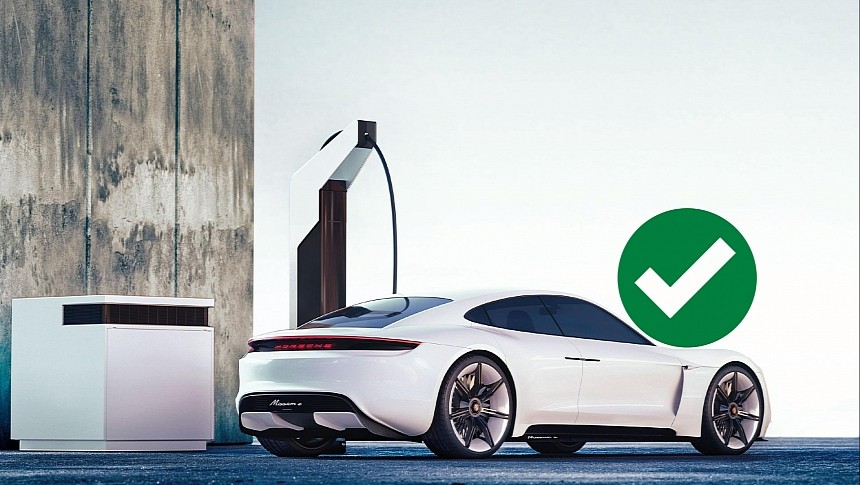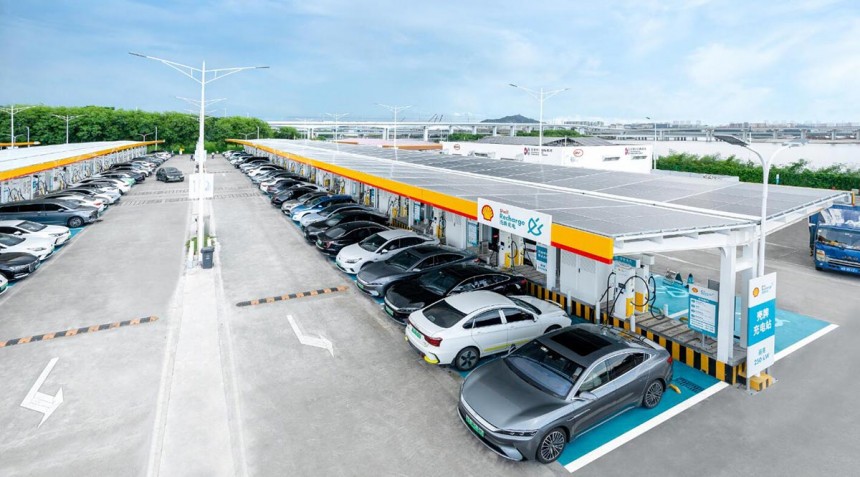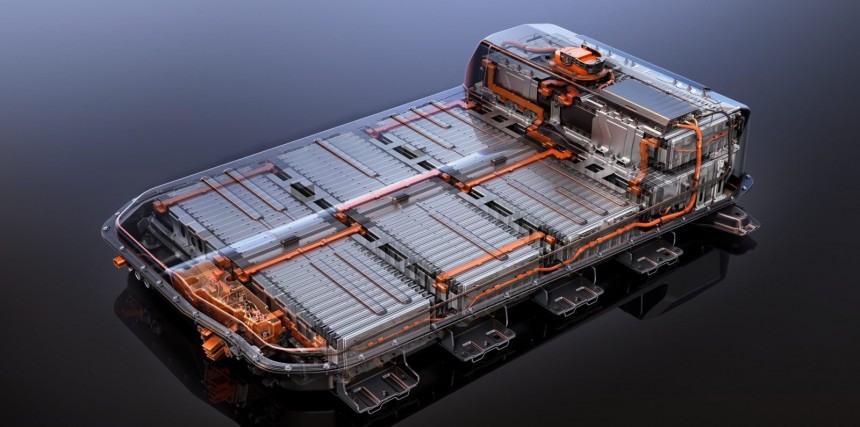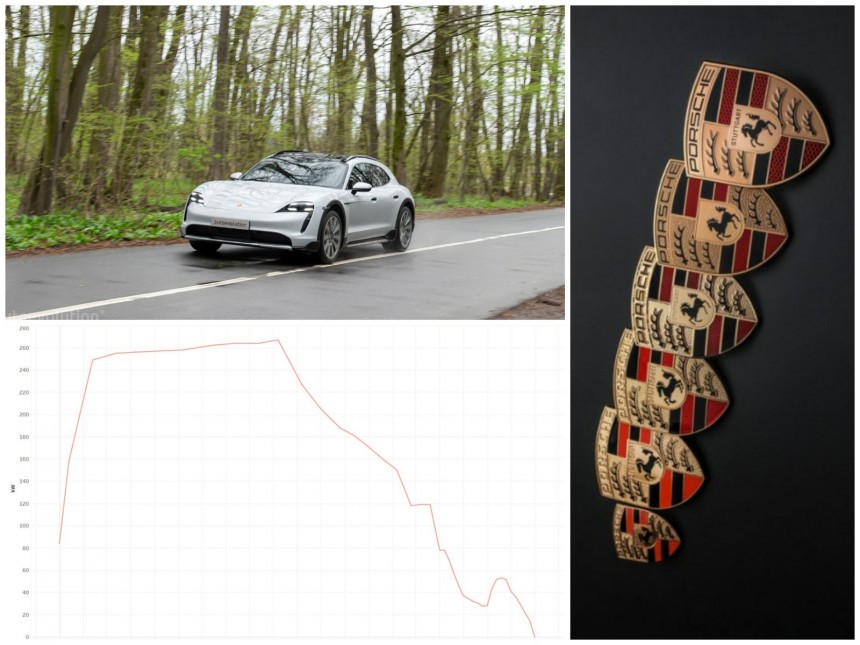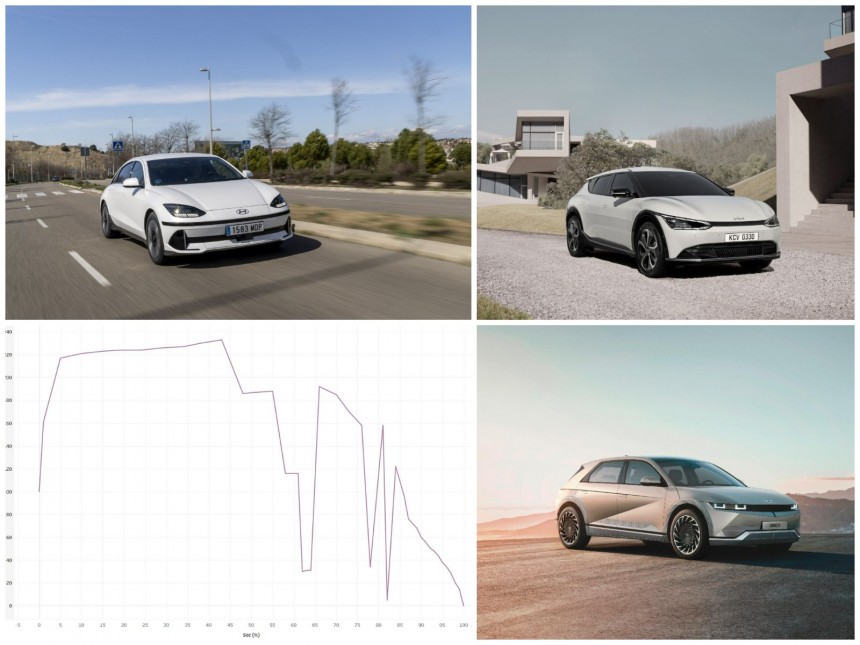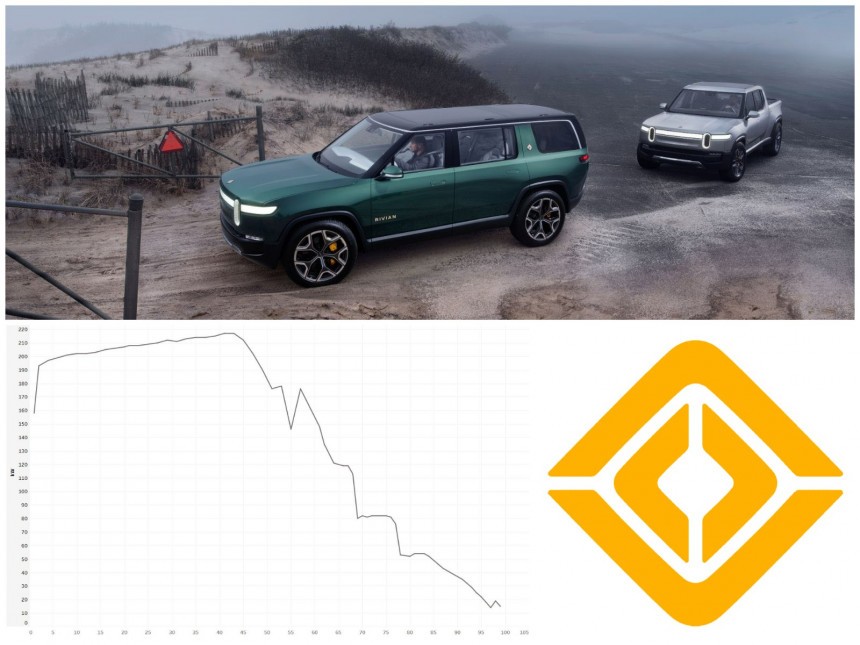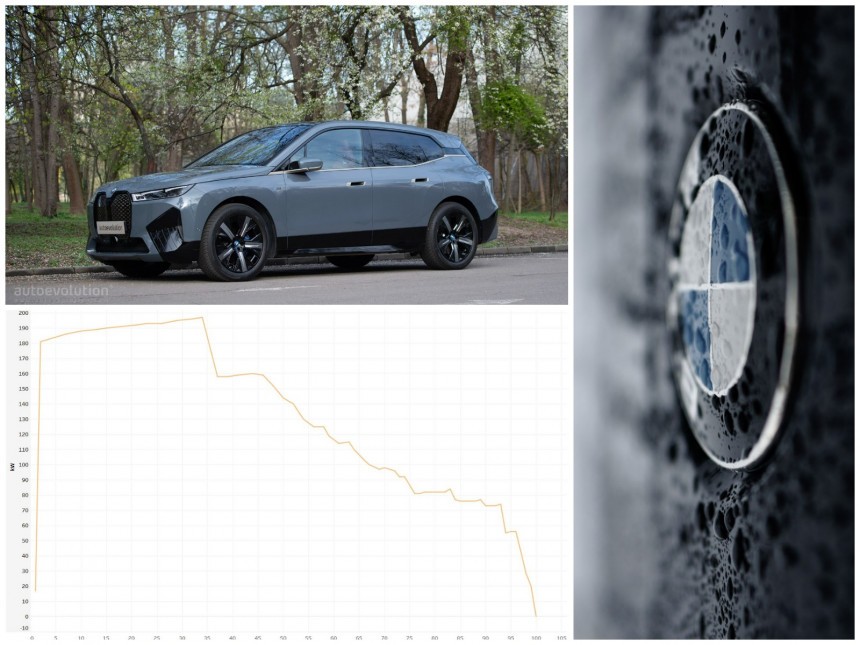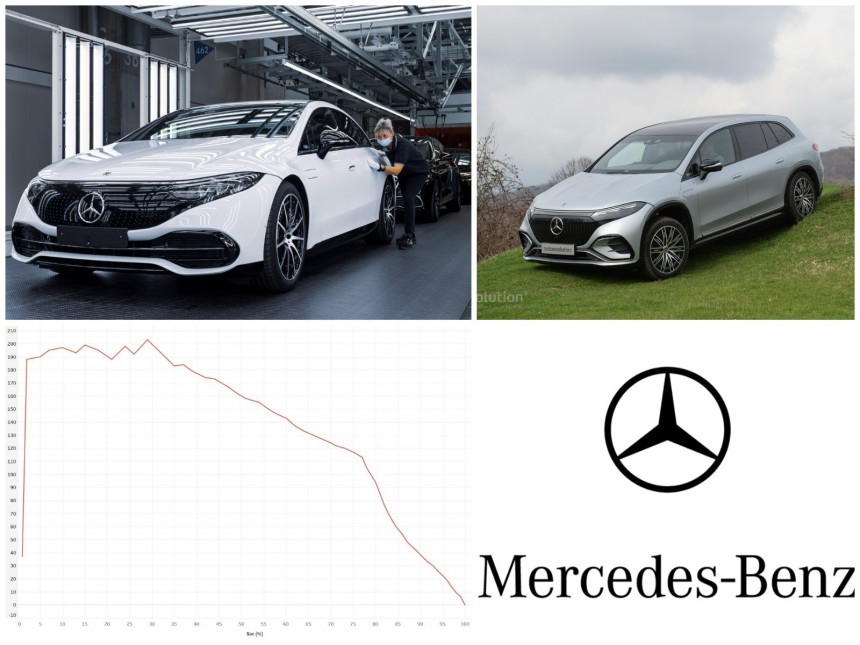If you are wondering what your next car should be, you shouldn't automatically dismiss battery-electric vehicles. Some are really good and can even help you spend less money on mobility. The ones we picked are also great for traveling long distances. Thus, you won't miss out on much. Here's what EV you should buy to avoid headaches and limitations.
The EV tax credit is currently available for a limited number of zero-emission vehicles because of new critical mineral sourcing and battery assembly requirements. However, those rules only apply if you're buying outright or financing.
On top of that, customers must meet the yearly income limits, while the zero-emission rides must have an MSRP of $55,000 for cars and $80,000 for SUVs, pickup trucks, and vans. Fortunately, there's a way out.
If the selling party transfers the credit to you, leasing an eligible EV can get you the federal perk. Rivian, for example, does that. It also includes the buyout option in the contract. That's how you can get your hands on an R1T with a $3,750 discount from Uncle Sam.
Now, let's see why we're bringing these suggestions to you.
We could find even more likable things about (properly designed) EVs. For example, the increased cargo room available thanks to a frunk is one of them. A lower center of gravity provided by the high-voltage battery installed on the floor can make these vehicles feel slightly nimbler.
But two characteristics that matter most are range and the ability to fast charge. Admittedly, efficient motors could also be squeezed in there. Some EV owners discovered why generous energy storage and good drive units matter greatly these past couple of weeks. Temperatures dropped below freezing levels, and people had to deal with a new paradigm.
The processes happening inside the cells are affected by colder temperatures. As a result, the EPA- or manufacturer-rated range can drop as far as -50%! Imagine if you didn't plug in overnight and woke up to a 15% state of charge. It would be unpleasant, to say the least.
Thus, you want to have a decently sized high-voltage battery, a smart battery management system, and a voltage architecture that allows the vehicle to gulp on electrons. Moreover, it's very important to have parts like an octovalve or a heat pump fitted to your EV from the factory. They can considerably improve range.
The Lucid Air Grand Touring, with its 112-kWh energy storage unit, is a good example in this regard. It can add over 200 miles of range in 20 minutes when hooked to a 350-kW DC fast charger. However, its issue is that it can't maintain a high charging speed for longer than that.
Fast charging is tricky because you're basically trying to fill a stadium. Every electron tries to find its place as quickly as possible. But as more seats are occupied, the harder it gets for these negatively charged particles to find their place.
Now, let's discover the EVs that will take you places with minimum hassle. Just make sure there are enough working DC fast chargers on your route. It's easy for us to do it without relying on what lab tests or what manufacturers have to say because the Out of Spec team ran their own real-world range tests and "clocked" the charging performance of many all-electric rides.
You only need to remember that the drivers preconditioned the batteries before plugging in at 0% state of charge.
Suppose you want to take advantage of all its capabilities. In that case, you'll need the upgraded battery ($5,780), the Range Manager ($300), the 19.2-kW on-board charger (for fast AC Level 2 charging), and the on-board 150-kW charger (for proper fast-charging sessions at less powerful dispensers). That means you're looking at a starting price of $100,770 before even touching the other options like rear-wheel-steering.
The good news is that for nearly $6,000, you're getting 34 miles of extra EPA-rated range. The rear-wheel-drive Taycan goes 242 miles on a single charge and in ideal conditions.
That figure can look pretty abysmal at first. However, the Taycan is saved by the charging curve. It starts shy (84 kW) but quickly jumps to 250 kW when the 7% state of charge threshold is reached. The vehicle maintains it until almost half of the battery is full. You can jump from charger to charger and drive far and wide before stopping for a nap.
I suggest being on the lookout for used Taycans with low mileage or even some warranty left on them. The e-tron GT previewed a grim scenario for owners. It depreciated like crazy!
You could also wait for the upcoming Macan EV. It has an amazing charging curve!
According to the EPA, the rear-wheel-drive Ioniq 5 (in SE/SEL/Limited trims) can travel 303 miles before needing access to a charger. The starting price of $45,700 is also pretty encouraging. Its Ioniq 6 sibling and EV6 half-sibling aren't too far off, either.
But probably the best thing about these well-known E-GMP EVs is that they can suck electrons from the grid with haste. The Ioniq 5 SE, for example, can add nearly 70 miles of range in 5 minutes. As such, it's not surprising that it has a good charging curve.
It starts at 100 kW, jumps to 217 kW almost immediately, and keeps upping the ante until it peaks at around 233 kW at 43% state of charge. Plug in, get a drink and something to munch on, and before you even finish your sandwich, you're good to go for another hour or more of zero-emission driving. The 72.6-kWh high-voltage battery is rather good at being an energy storage.
When writing, Hyundai is also running a promo: some of its dealers are chopping $15,000 off the sticker price!
You won't regret buying an R1T or an R1S, especially if we're talking about the dual-motor large-pack configuration. The max pack shouldn't be considered because it doesn't provide a meaningful upgrade for what it is. Similarly, the quad-motor EVs are known for having more energy-hungry drive units.
As such, a Rivian pickup truck or SUV with the 135-kWh high-voltage energy storage unit will help you remain adventurous. It may not have the coveted 800V architecture, but it can still start charging at a speed of 160 kW, advance to 200 kW at 6% state of charge, and reach a speed of 217 kW at a 43% charge level.
That is what you want to see, especially if you plan on towing something. Some might argue that an 800V architecture would have also been necessary, considering the starting costs of $79,000 and $84,000, respectively.
A starting cost of $111,500 gets an urban SUV with the Stormtrooper look and the 111.5-kWh high-voltage energy storage unit. The EPA says it can go 296 miles on a single charge.
But what interests us is how fast it can charge. Although it doesn't have the 800V architecture, the iX M60 can take electrons from the grid rather fast. It starts charging at around 17 kW but quickly rises to the occasion by increasing the speed at 2% state of charge when it pulls electrons at 181 kW from the dispenser. It tops at 34% state of charge when the speed is 197 kW.
The good thing about it is that you know BMW won't overpromise and underdeliver. The Bavarians don't like disappointing their customers.
Personally, I would go with the iX xDrive50. It has the same battery. You're only missing out on 20 hp and 185 lb-ft of torque and a temporary output increase when Launch Control is turned on. But you're saving $24,400!
That's something anyone would expect from the company that invented the car, but it's not wild to expect great things from a sedan or SUV with the "S" letter in its name and a starting price of over $100,000.
The EQS starts charging at a speed of 40 kW per hour but immediately goes up to 188 kW as the 2% state of charge is reached. The 203 kW limit is reached at 29% battery level, but you can keep it plugged in until 39% because the charging speed doesn't drop dramatically.
As we recently reported, buying the rear-wheel-drive EQS SUV could be wise because that vehicle goes farther than expected.
Finally, are there other EVs out there with impressive charging speeds? Yes. Are there valid concerns about the state of chargers equipped with the CCS connector? Yes. Can fast charging be more expensive than filling up with gas in most states? Yes.
But the five we selected are your best shot at spending less time plugged in while road-tripping guilt-free. If you're still unconvinced, don't forget that major automakers make good plug-in hybrids. Something like the BMW X5 xDrive50e or the Mitsubishi Outlander PHEV can ease your way into an all-electric lifestyle.
Drive safe!
On top of that, customers must meet the yearly income limits, while the zero-emission rides must have an MSRP of $55,000 for cars and $80,000 for SUVs, pickup trucks, and vans. Fortunately, there's a way out.
If the selling party transfers the credit to you, leasing an eligible EV can get you the federal perk. Rivian, for example, does that. It also includes the buyout option in the contract. That's how you can get your hands on an R1T with a $3,750 discount from Uncle Sam.
Now, let's see why we're bringing these suggestions to you.
The promising world of a gas-free lifestyle
Two great things about EVs are their ability to put all the power down almost instantly and the absence of a noisy engine and a trembling exhaust system. The latter guarantees the driver a more pleasant behind-the-steering-wheel experience and a quieter cabin for everybody else. Kids and the elderly might like it a lot.We could find even more likable things about (properly designed) EVs. For example, the increased cargo room available thanks to a frunk is one of them. A lower center of gravity provided by the high-voltage battery installed on the floor can make these vehicles feel slightly nimbler.
But two characteristics that matter most are range and the ability to fast charge. Admittedly, efficient motors could also be squeezed in there. Some EV owners discovered why generous energy storage and good drive units matter greatly these past couple of weeks. Temperatures dropped below freezing levels, and people had to deal with a new paradigm.
The processes happening inside the cells are affected by colder temperatures. As a result, the EPA- or manufacturer-rated range can drop as far as -50%! Imagine if you didn't plug in overnight and woke up to a 15% state of charge. It would be unpleasant, to say the least.
Thus, you want to have a decently sized high-voltage battery, a smart battery management system, and a voltage architecture that allows the vehicle to gulp on electrons. Moreover, it's very important to have parts like an octovalve or a heat pump fitted to your EV from the factory. They can considerably improve range.
Don't forget about the curve
But the one thing that's paramount for road-tripping with an EV is the charging curve. That term describes the ability to hold onto a high charging speed for as long as possible.The Lucid Air Grand Touring, with its 112-kWh energy storage unit, is a good example in this regard. It can add over 200 miles of range in 20 minutes when hooked to a 350-kW DC fast charger. However, its issue is that it can't maintain a high charging speed for longer than that.
Fast charging is tricky because you're basically trying to fill a stadium. Every electron tries to find its place as quickly as possible. But as more seats are occupied, the harder it gets for these negatively charged particles to find their place.
Now, let's discover the EVs that will take you places with minimum hassle. Just make sure there are enough working DC fast chargers on your route. It's easy for us to do it without relying on what lab tests or what manufacturers have to say because the Out of Spec team ran their own real-world range tests and "clocked" the charging performance of many all-electric rides.
You only need to remember that the drivers preconditioned the batteries before plugging in at 0% state of charge.
Porsche Taycan with the Performance Battery Plus
The cheapest Taycan you can order today starts at $90,900. It has a maximum output of 469 hp when the Overboost ability is activated.Suppose you want to take advantage of all its capabilities. In that case, you'll need the upgraded battery ($5,780), the Range Manager ($300), the 19.2-kW on-board charger (for fast AC Level 2 charging), and the on-board 150-kW charger (for proper fast-charging sessions at less powerful dispensers). That means you're looking at a starting price of $100,770 before even touching the other options like rear-wheel-steering.
The good news is that for nearly $6,000, you're getting 34 miles of extra EPA-rated range. The rear-wheel-drive Taycan goes 242 miles on a single charge and in ideal conditions.
That figure can look pretty abysmal at first. However, the Taycan is saved by the charging curve. It starts shy (84 kW) but quickly jumps to 250 kW when the 7% state of charge threshold is reached. The vehicle maintains it until almost half of the battery is full. You can jump from charger to charger and drive far and wide before stopping for a nap.
I suggest being on the lookout for used Taycans with low mileage or even some warranty left on them. The e-tron GT previewed a grim scenario for owners. It depreciated like crazy!
You could also wait for the upcoming Macan EV. It has an amazing charging curve!
Hyundai Ioniq 5 / Hyundai Ioniq 6 / Kia EV6
The South Koreans did it right from the get-go. They invested in an 800V platform and gave the world funky-looking retro-inspired zero-emission cars that can go the distance without forcing the driver to spend too much time plugged in.According to the EPA, the rear-wheel-drive Ioniq 5 (in SE/SEL/Limited trims) can travel 303 miles before needing access to a charger. The starting price of $45,700 is also pretty encouraging. Its Ioniq 6 sibling and EV6 half-sibling aren't too far off, either.
But probably the best thing about these well-known E-GMP EVs is that they can suck electrons from the grid with haste. The Ioniq 5 SE, for example, can add nearly 70 miles of range in 5 minutes. As such, it's not surprising that it has a good charging curve.
It starts at 100 kW, jumps to 217 kW almost immediately, and keeps upping the ante until it peaks at around 233 kW at 43% state of charge. Plug in, get a drink and something to munch on, and before you even finish your sandwich, you're good to go for another hour or more of zero-emission driving. The 72.6-kWh high-voltage battery is rather good at being an energy storage.
When writing, Hyundai is also running a promo: some of its dealers are chopping $15,000 off the sticker price!
Rivian R1T / R1S
Alongside Lucid, Rivian is one of the most important automotive startups. Its R1-series EVs are great. They've been well-designed and -engineered from the start. There were a couple of hiccups along the road, but nobody's perfect. The California-based brand at least fared better than Fisker.You won't regret buying an R1T or an R1S, especially if we're talking about the dual-motor large-pack configuration. The max pack shouldn't be considered because it doesn't provide a meaningful upgrade for what it is. Similarly, the quad-motor EVs are known for having more energy-hungry drive units.
As such, a Rivian pickup truck or SUV with the 135-kWh high-voltage energy storage unit will help you remain adventurous. It may not have the coveted 800V architecture, but it can still start charging at a speed of 160 kW, advance to 200 kW at 6% state of charge, and reach a speed of 217 kW at a 43% charge level.
That is what you want to see, especially if you plan on towing something. Some might argue that an 800V architecture would have also been necessary, considering the starting costs of $79,000 and $84,000, respectively.
BMW iX M60
Disliked by many for its distinctive front end, the iX is actually a marvelous EV that makes BMW proud. You just have to give it a try before completely taking it off your list of possible zero-emission rides to buy.A starting cost of $111,500 gets an urban SUV with the Stormtrooper look and the 111.5-kWh high-voltage energy storage unit. The EPA says it can go 296 miles on a single charge.
But what interests us is how fast it can charge. Although it doesn't have the 800V architecture, the iX M60 can take electrons from the grid rather fast. It starts charging at around 17 kW but quickly rises to the occasion by increasing the speed at 2% state of charge when it pulls electrons at 181 kW from the dispenser. It tops at 34% state of charge when the speed is 197 kW.
The good thing about it is that you know BMW won't overpromise and underdeliver. The Bavarians don't like disappointing their customers.
Personally, I would go with the iX xDrive50. It has the same battery. You're only missing out on 20 hp and 185 lb-ft of torque and a temporary output increase when Launch Control is turned on. But you're saving $24,400!
Mercedes-Benz EQS / EQS SUV
Last but not least on our list of EVs that charge really fast are Mercedes-Benz's top-of-the-line battery-electric EQ models. The sedan and the SUV have differently sized energy storage units (108.4 kWh vs. 118 kWh), but the underlying technology is the same. They can go pretty far on a single charge and replenish the battery quickly.That's something anyone would expect from the company that invented the car, but it's not wild to expect great things from a sedan or SUV with the "S" letter in its name and a starting price of over $100,000.
The EQS starts charging at a speed of 40 kW per hour but immediately goes up to 188 kW as the 2% state of charge is reached. The 203 kW limit is reached at 29% battery level, but you can keep it plugged in until 39% because the charging speed doesn't drop dramatically.
As we recently reported, buying the rear-wheel-drive EQS SUV could be wise because that vehicle goes farther than expected.
Finally, are there other EVs out there with impressive charging speeds? Yes. Are there valid concerns about the state of chargers equipped with the CCS connector? Yes. Can fast charging be more expensive than filling up with gas in most states? Yes.
But the five we selected are your best shot at spending less time plugged in while road-tripping guilt-free. If you're still unconvinced, don't forget that major automakers make good plug-in hybrids. Something like the BMW X5 xDrive50e or the Mitsubishi Outlander PHEV can ease your way into an all-electric lifestyle.
Drive safe!
